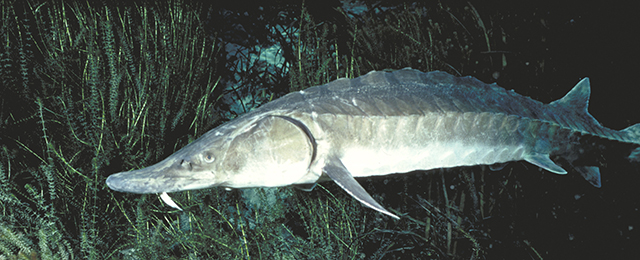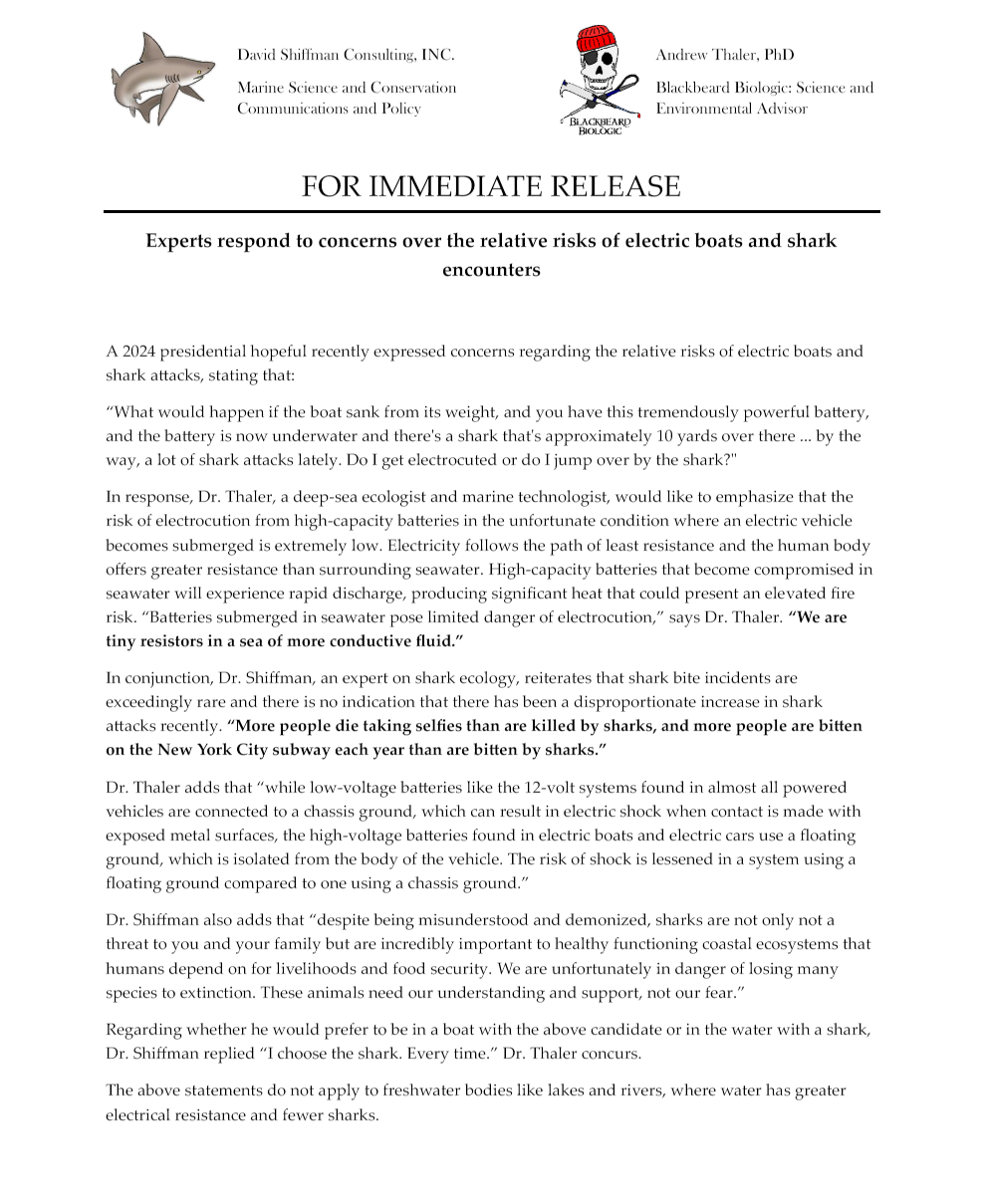Endangered species seem to be coming up around here more often than usual, mostly due to the potential state-level listing of great white sharks in California. This move has been resisted from some surprising corners, including researchers who are generally pro-shark conservation. The reasons why scientists might want to oppose an Endangered Species listing are laid out by Dr. Chris Lowe in an earlier post on this very blog, so I won’t reiterate all of them here. Surprisingly, I have yet to see any comments accusing Dr. Lowe of being a shill for the drift gillnet fishery.
There seems to a be a real sense among some conservation-minded folks that Endangered Species listing is something of a “holy grail” for species protection and recovery, and some petitioners would have you believe that anything less is unacceptable (and probably the result of corruption). However, the Endangered Species Act has a very specific process by which species receive protection, and a defined set of limitations. A lot of well-meaning people seem to have limited knowledge of this process and limitations. To do my little part to help fix this, this post will be a short primer on the Act and will show how a marine species has recently navigated the entire process for listing. With any luck, maybe this will result in one or two fewer misguided online petitions.
The United States Endangered Species Act of 1973 (referred to as the ESA from here on in, because I’m a scientist and we love acronyms) is considered one of the strongest environmental protection laws of any nation. This law grants broad species protection powers that effect use of the species, use of its habitat, research, and even the use or harvest of other species that happen to be nearby. The intent of the ESA is to be a “nuclear option” for species protection: if all else fails, a species gets listed and things get real.
One thing that may be unfamiliar is that the ESA doesn’t necessarily define “species” as the whole worldwide population of a species. Instead, “species” can mean “distinct population segments” (DPS) or “evolutionarily significant units” (ESU) of a species. DPSs are subpopulations that are physically or behaviorally isolated from the rest of the species and ESUs are genetically-distinct. These definitions are intended to give the ESA the flexibility to apply its powers on specific parts of endangered species’ global population that are in greater danger than others. For marine species, this is often applied in the case of anadromous species, where some subpopulations may depend on rivers that are more polluted than others or blocked by dams. This is why some Pacific salmon species are ESA-listed in California and Oregon but are totally cool to fish for in Alaska.
For marine species, NOAA is the federal agency in charge of implementing the ESA, from the listing process to enforcement. There is a well-defined procedure and order of operations for getting a species listed on the ESA. First, the species has to be petitioned for listing, which can either happen through NOAA (which may notice a species is in particularly bad shape over the course of its own population assessments) or through private citizens, usually via a non-governmental organization like Oceana. Once the petition is in, NOAA performs a 90-day review of the reasoning behind the petition. If the petition passes the review, the species becomes a candidate species, which means it must be assessed by NOAA to determine if listing is appropriate. In order for listing to be considered, a species must be in imminent danger of extinction due to 1) habitat destruction, 2) over-utilization (i.e. overfishing), 3) disease or predation (which usually doesn’t even come close to threatening extinction unless something else is already very, very wrong), 4) inadequate protection by other laws or management practices, and/or 5) any other man-made threats to its existence. A species can end up listed as “threatened” or “endangered,” which are essentially the rankings of how likely a species is to go extinct without ESA intervention.
Recently, Atlantic sturgeon (Acipenser oxyrinchus) received ESA listing, and their journey up the list is actually a good case study in how and why a species gets listed.

The path to Atlantic sturgeon listing is essentially a series of fishery management plans failing to bring the population back up, suggesting that at some point fisheries ceased to be the problem. They certainly were at the start however, with sturgeon caught in large numbers all along the U.S. East Coast for their meat and eggs (a.k.a. caviar). By 1990 it became apparent that the sturgeon population had crashed, and the Atlantic States Marine Fishery Commission (ASMFC), which oversees east coast fisheries in state waters, set a quota at 10% of historic landings. Despite this, sturgeon numbers continued to decline and in 1998 NOAA and the ASMFC instituted a total moratorium on landing Atlantic sturgeon, shutting down the fishery completely. Even with this measure sturgeon continued to decline.
With the fishery totally out of the picture, it became apparent that sturgeon were being hurt elsewhere, likely in their spawning rivers. Like all anadromous species, if sturgeon can’t make it upstream to spawn, they’re in trouble. All fishery management options had already been exhausted, but the ESA should give agencies the authority to tackle the pollution and damming that are keeping sturgeon from reproducing. This makes the listing of sturgeon a textbook example of how a marine species should be listed: exhaust other options first, then bring in the big guns of the ESA. In 2009 the National Resource Defense Council (NRDC) petitioned NOAA to list Atlantic sturgeon, and in 2012 all populations south of the Gulf of Maine were officially designated endangered.
Why weren’t sturgeon simply listed as soon as the severity of their decline became clear? Simply put, to give other conservation options time to work. Remember, one of the requirements for listing is that other laws are inadequate to prevent extinction. Therefore, Dr. Lowe’s argument that current protection measures are already working for white sharks is his best: if shark populations are stabilizing or increasing under already-existing regulations, then ESA listing is unnecessary. It’s important to make sure actions short of ESA listing are working, because listing a species and enforcing its protection are not only expensive, but also potentially disruptive to every other activity taking place within the habitat of that species. This includes development, recreation, fishing (including accidental bycatch), and yes, even scientific research.
So what makes a marine species a good choice for ESA listing? Ultimately, like fisheries management, ESA listing is at least as much as much a political process as a scientific one. If a fishery management plan or fishery moratorium can allow a population to rebuild, then there’s no reason to go any further. The fact that an FMP has considerably milder economic consequences than ESA listing is also worth considering. However, if issues such as pollution of spawning areas or blockage by dams are keeping a species in trouble, then conservation measures involving strong laws and multiple agencies are necessary. Then the ESA becomes appropriate.
And let’s not forget that the ESA only applies to U.S. territory and trade. If white sharks do become listed, it won’t do anything to prevent fishermen outside of U.S. waters from targeting them. That’s when CITES comes in, and that’s a whole different post.

Good coverage of the issues to hand. I am consistantly pleased by the content and unbiased perspectives on Southern Fried Science. Good job all y’all.
GB
List or don’t list? In the end, what is the difference? Please, let Beel present a very pragmatic answer. The feds can enforce take regulations, but so can the state, if it chose to impose such. Federal fines are greater and and federal courts less lenient than the state, so that provides an additional incentive against take. But the real power in the Endangered Species Act is that it requires all federal programs (highway funds, etc) to comply with the provisions of the Act. There are no federally funded projects off the coast of California to worry about. Apart from steeper penalties, listing fish only makes life more difficult for the scientists and managers trying to preserve these things. Listing fish does not automatically make funds available to study, manage, conserve species. It just requires such. This is Beel’s life: more paper work, but no additional money.